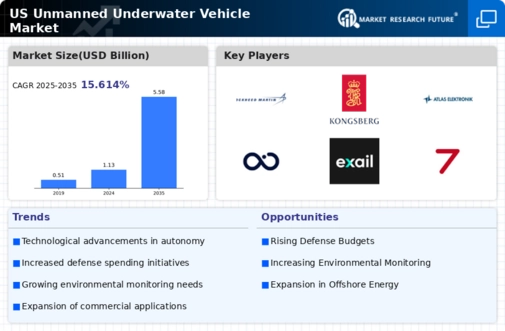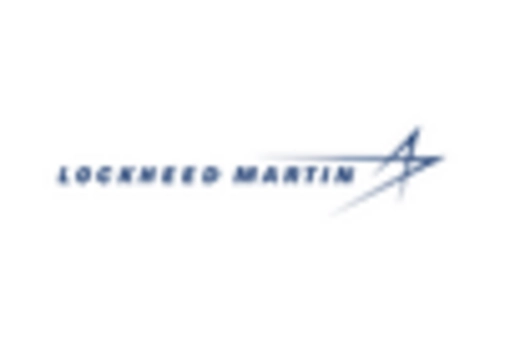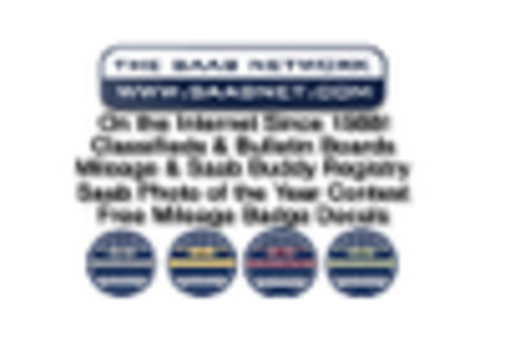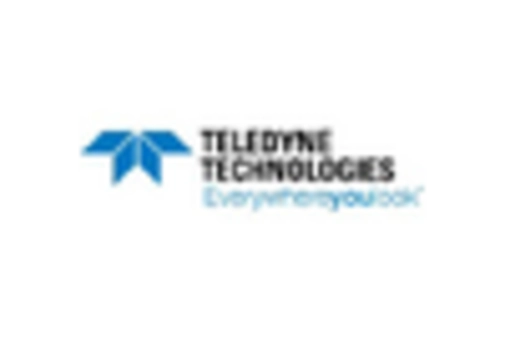The US Unmanned Underwater Vehicle Market is a rapidly evolving sector that plays a pivotal role in underwater exploration, military applications, and various commercial activities. This market features intense competition among key players who are continually seeking to enhance the technology and capabilities of their unmanned systems. The competitive landscape is characterized by advancements in innovation, strategic partnerships, and a focus on developing advanced submersible technologies that can operate in challenging environments. Factors driving competition include the demand for reconnaissance capabilities, underwater surveillance, and mission-specific operational requirements.
As nations invest significantly in defense and exploration programs, players in this market are vying to advance their offerings, leading to a dynamic and competitive environment.Lockheed Martin is a dominant player in the US Unmanned Underwater Vehicle Market, known for its strong emphasis on research and development and technological innovation. The company leverages its extensive experience in defense and aerospace to develop cutting-edge unmanned submersibles that meet both military and civilian requirements. Lockheed Martin's capabilities extend beyond autonomous underwater vehicles to encompass a range of advanced systems that are integrated into naval operations.
The company's strengths lie in its robust supply chain, established relationships with defense agencies, and commitment to enhancing the performance and resilience of underwater systems. With a focus on providing reliable solutions to its customers, Lockheed Martin continues to solidify its presence in this competitive landscape through strategic investments and a commitment to pushing the boundaries of underwater technology.Oceaneering International holds a significant position in the US Unmanned Underwater Vehicle Market, known for its strong focus on deepwater technology and services that cater to the oil, gas, and defense sectors.
The company offers a range of underwater vehicles and integrated solutions aimed at supporting complex underwater operations. Key products include remotely operated vehicles (ROVs) and autonomous underwater vehicles (AUVs) that are designed to assist in exploration, inspection, and maintenance activities. Oceaneering's strengths stem from its extensive knowledge and expertise in underwater robotics, making it a trusted partner for various industries that rely on underwater exploration. Moreover, the company is active in mergers and acquisitions, aiming to enhance its technological capabilities and expand its service offerings in the US market.
This strategic approach not only fortifies Oceaneering's competitive position but also empowers it to adapt to the evolving demands of the unmanned underwater vehicle sector.





















Leave a Comment